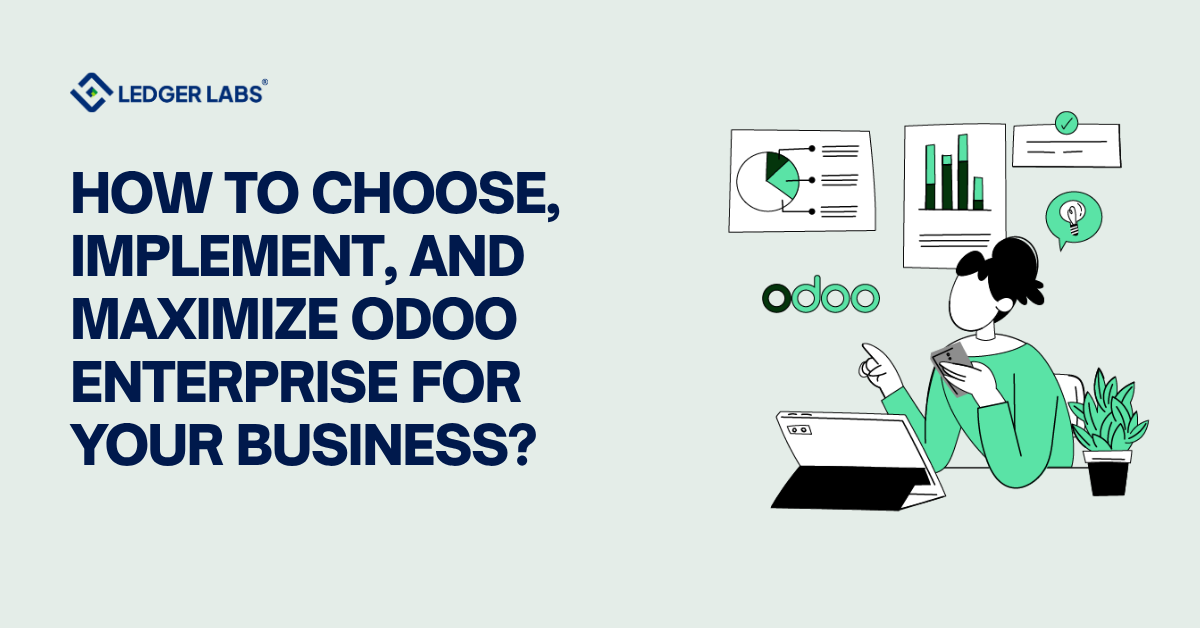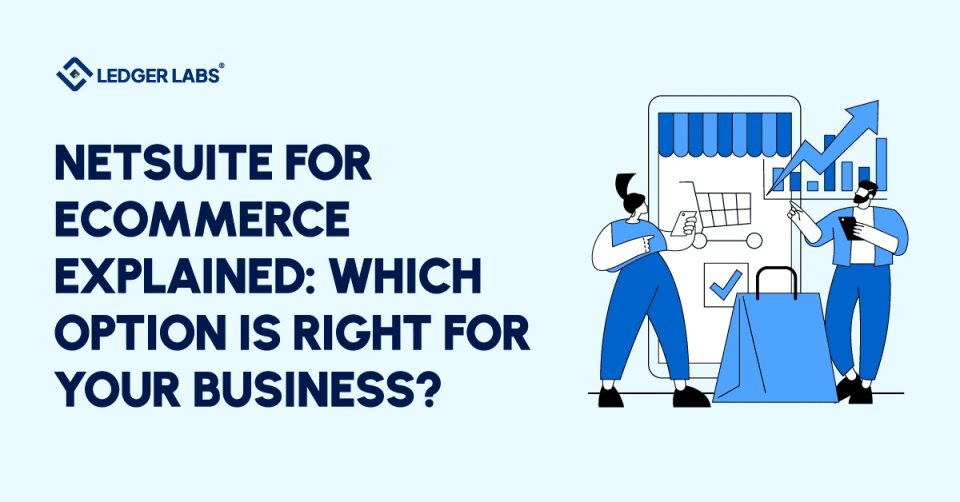Most businesses do not fail because they chose the wrong ERP. They fail because they chose too fast.
When growth strains existing tools such as spreadsheets, QuickBooks, or disconnected CRMs, founders often rush into the first ERP that promises scalability.
But ERPs are not plug-and-play. The software itself rarely fails; the fit and the implementation discipline do.
That is where Odoo Enterprise stands out. It is not a pre-packaged ERP. It is a modular, open, and deeply customizable framework that can be shaped around your operations. To extract its value, you have to approach it deliberately: choose the right edition, implement it correctly, and continue optimizing it as your business evolves.
This guide breaks that down step by step.
Key Takeaways
- Odoo Enterprise adapts to your business when implemented with structure and purpose.
- Success depends on disciplined rollout, accurate accounting integration, and continuous optimization.
- Avoid over-customization and unnecessary integrations; simplicity scales better.
- Treat ERP data as decision infrastructure, not digital storage.
- Ledger Labs helps businesses design, implement, and manage Odoo systems that deliver real operational clarity and financial precision.
An *Important* Overview
Odoo Enterprise is not just the paid version of Odoo. It is the professional-grade foundation of an integrated business system designed for scalability and operational precision.
You gain access to advanced modules that Odoo Community lacks, including accounting, inventory forecasting, manufacturing, marketing automation, and official support.
But the real advantage lies in its structure. It is fully modular, API-friendly, and compatible with both cloud and on-premise deployments.
Unlike rigid ERPs that force businesses to adapt their workflows to the software, Odoo Enterprise adapts to you.
That is why companies in manufacturing, retail, logistics, and services prefer it. It scales up without disrupting existing processes.
However, that flexibility can easily backfire without guidance. Over-customization, rushed migrations, and poor change management are the three most common reasons Odoo projects underperform.
Ledger Labs has seen this repeatedly. The businesses that thrive on Odoo are not the ones that build the most modules. They are the ones that build the right system, one that connects finance, operations, and data flow with structure and clarity.
Choosing the Right Odoo Enterprise Setup
Odoo Enterprise gives you flexibility, but that freedom only works if you define your structure early. Before starting implementation, clarify three things:
- Your operational priorities
- Your hosting strategy
- Your internal ownership model
1. Define your operational priorities
List the business processes that must be unified first.
Most companies start with accounting, sales, and inventory because those drive financial visibility and control.
Then expand to CRM, HR, or manufacturing once your core workflows are stable.
Odoo’s modular design allows staged rollouts. Avoid implementing everything at once. Focus on building a reliable base and then scale horizontally.
2. Choose your hosting model
Odoo Enterprise supports three main environments, and each fits a different maturity level:
- Odoo Online is fully managed by Odoo and is best for small to mid-size teams that want minimal maintenance.
- Odoo.sh offers more flexibility, giving developers control over branches, testing, and versioning without full server management.
- On-Premise provides total control over the stack but requires strong IT capacity or a managed partner.
The right choice depends on how much control you need and how much infrastructure you can manage.
3. Establish Ownership
ERP projects fail when no one owns the process.
Assign an internal project lead who understands both operations and finance.
Their role is not to code but to define requirements, review workflows, and ensure accountability between departments.
Why the Right Partner Matters?
Even with a clear plan, Odoo Enterprise succeeds only when configured by professionals who understand both business logic and accounting structure.
Many companies hire developers who can install modules but cannot interpret what those numbers mean to the CFO.
Ledger Labs approaches Odoo from both angles.
We treat ERP not as software but as financial infrastructure. Every workflow, integration, and Odoo automation must lead to clean, actionable data.
Implementing Odoo Enterprise the Right Way
Once the setup strategy is clear, implementation becomes a question of discipline.
Odoo Enterprise is powerful, but that power multiplies mistakes if deployed without structure. The goal is not to launch quickly but to launch correctly.
- Start with process mapping: Before installing anything, map your current workflows. Document how data moves between departments – from sales to invoicing, inventory, and accounting. Identify where bottlenecks and redundancies occur.
This exercise defines how Odoo should be configured. Copying your existing chaos into a new ERP system only moves the problem to a different platform.
- Build a minimal viable system: Implement only what you can manage well. Start with a clean foundation of accounting, CRM, and inventory. Use real data, test workflows end to end, and confirm that reporting aligns with your financial structure. Once the base is stable, expand to other modules such as HR or manufacturing.
This staged rollout approach reduces risk, simplifies training, and prevents early burnout among your team.
- Integrate with intent: Integrations are where most ERP systems get messy. Every new API adds complexity, latency, and maintenance. Before connecting third-party software, define its purpose and data ownership.
For instance, integrate your eCommerce platform for live order syncing only if you have the fulfillment infrastructure to support it. Avoid integrating tools just because they can connect. Each one should serve a measurable operational or reporting goal.
- Train and transition gradually: An ERP rollout fails when teams are forced into it overnight. Instead, run Odoo in parallel with your old system for a short time. This allows teams to verify data accuracy, identify gaps, and adapt to new workflows without losing continuity.
Good implementation is not about speed or volume. It is about accuracy, adoption, and clean data that executives can trust.
Maximizing Odoo Enterprise After Go-Live
A successful Odoo implementation is not the end of the project.
It is the beginning of an optimization cycle that determines whether your ERP stays efficient or becomes another system everyone avoids.
- Build continuous improvement into your process: Once Odoo is live, establish a monthly or quarterly review rhythm. Track which modules your team uses regularly and which remain underutilized. Review reports for accuracy, loading speed, and alignment with decision-making needs. Small adjustments, such as refining access rights or simplifying approval flows, can have large productivity gains. Treat Odoo as a living system that should evolve with your operations.
- Monitor financial accuracy: Many ERP implementations deliver operational visibility but not financial clarity. Odoo’s accounting framework can automate reconciliation, journal entries, and intercompany reporting – but only if configured correctly.
Run validation checks regularly to ensure that transactions, invoices, and payments align across all modules. Clean accounting data is what turns Odoo from a management tool into a decision-making platform. - Use data for insight, not storage: ERP data is valuable only when it supports judgment. Use Odoo’s reporting tools to track real metrics such as fulfillment accuracy, production efficiency, receivable days, and cash flow reliability. Avoid cluttered dashboards. Focus on what drives better business decisions.
- Keep updates structured: New Odoo versions are released annually. Schedule updates after testing in a staging environment to protect your custom modules and integrations. Skipping structured updates leads to version drift and eventual downtime.
How Ledger Labs Helps You Get There?
Ledger Labs supports companies through the full Odoo Enterprise lifecycle.
Our approach combines financial logic with technical depth. We do not just install Odoo. We design ERP ecosystems that reflect how your business actually works.
- Implementation and configuration built around accounting accuracy.
- Module design that scales with operational growth.
- Continuous optimization for cleaner reporting and faster decision cycles.
Odoo Enterprise, when handled correctly, becomes more than software. It becomes a framework for control, precision, and data-driven management. With the right structure and partner, it can define how your company runs for the next decade.
And what better way than outsourcing your Odoo implementation and optimization? We at Ledger Labs have spent the last 12 years helping companies around the US optimize their Odoo-related activities.
Schedule a call with us to learn more.












